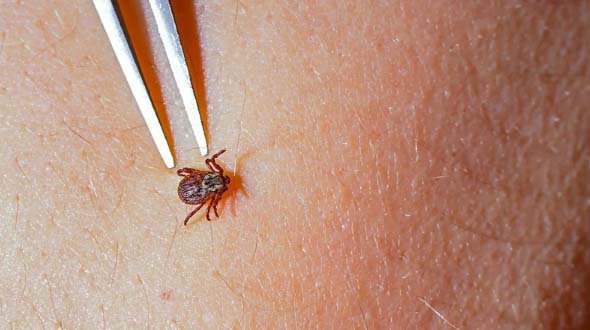Lyme disease is becoming more common. But its symptoms aren’t always easy to spot
Published: 03 August 2024, 7:13:55

Climate change is contributing to the global rise of Lyme disease. But many physicians are struggling to recognise its symptoms.
Ticks are blood sucking parasites and second only to mosquitos when it comes to transmitting diseases to humans. But when that bite happens, along with the potential risk of infection and serious illness, you may not even feel it.
These spider-like arachnids, with eight legs and a body no bigger than an apple seed, can secrete an anti-inflammatory substance to disguise its feeding. This allows a host of disease-causing pathogens that may have infected the tick beforehand to freeload a ride into your bloodstream.
The most well-known of these freeloaders is the spiral-shaped bacteria Borrelia burgdorferi which causes Borreliosis or Lyme disease. It is named after the town of Lyme in Connecticut in the United States, where it was first identified in 1975 after both children and adults began reporting symptoms similar to arthritis.
Lyme, however, is a disease with many more symptoms, and these can get more varied if treatment is not prompt. “It’s a type of bacteria that penetrates every tissue in the body,” says Jack Lambert, a consultant in infectious diseases, professor of medicine at University College Dublin and founder of the Lyme Resource Centre.
“It goes to the brain, it goes to the joints. It goes to the muscles, the nervous system, the peripheral nervous system, the bladder and the gut,” Lambert says.
Lyme disease can also cause facial paralysis, heart problems, severe fatigue and painful pins and needles in hands and feet. As a result, the range of symptoms means not every patient is taken seriously.
“Early in the days of Lyme disease there was a big debate,” says Brian Fallon, director of the Lyme and Tick-Borne Diseases Research Center at Columbia University in New York. “Are patients making it up? Are they hypochondriacs where they think they’re ill when they’re not? That’s what led to a lot of struggles in the early 1990s with how to treat these patients.”
That struggle continues. The Welsh rapper Ren, for example, was initially diagnosed with bipolar disease and chronic fatigue syndrome. Bedbound for several years, he even had to suspend his music career before being accurately diagnosed with Lyme in 2015; he still receives treatment for autoimmune conditions as a result of the infection.
Lyme is rarely fatal, and most people will recover if treated quickly with antibiotics today. The problem is in diagnosis, since many medical practitioners put too much emphasis on the initial presence of an expanding rash (erythema migrans) that has red concentric “bullseye” rings resembling the centre target of a dart board.





